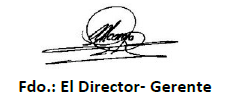1950
On March 20, 1954, Cooperativa Jesús del Perdón was founded, as a result of the need of a group of 102 winegrowers in the area to produce and market the products obtained from their farms and defend themselves from the speculation to which they were subjected. Initially the capacity of the Warehouse was 6,000,000 Kgs.
1950
On March 20, 1954, the Jesús del Perdón Cooperative was founded as a result of the necessity of a group of 102 wine growers in the area to produce and market the products obtained from their farms and defend themselves from the speculation to which they were subjected. Initially to grind 6,000,000 Kgs.
1960
In this decade, the 1st and 2nd expansion took place, reaching 10,000,000 kg. More lands were acquired and in 1967 the merger by absorption of the San Isidro Cooperative took place. In 1968 we started bottling our first wines.
1960
In this decade, the 1st and 2nd expansion takes place with the merger by absorption of the San Isidro Cooperative and with the purchase of more land. In 1969 we begin to bottle our first wines.
1970
In 1974 the brands Yuntero, Pálido Manzanares and Yuntero Tinto Fino were registered. In 1975, works were carried out for the distillery and to be able to load bulk with RENFE. In this decade the winery is included in D.O. Mancha and the offices were moved to the winery facilities and the first bottling plant was built.
1970
In 1974 the brands Yuntero Pálido Manzanares and Yuntero Tinto Fino are registered, a year later renovation work is done in the distillery in order to be able to load bulks with RENFE. In this decade the winery is included in D.O. Mancha and the offices are moved to the warehouse facilities.
1980
Warehouse expansions continue with the building of a new jaraíz and the creation of a cereal section. Exports to Europe and USA begin by launching the wines in significant food chains.
1980
Warehouse expansions continue with the building of a new jaraíz and the creation of a cereal section. Exports to Europe and USA begin by launching the wines in significant food chains.
1990
In 1990, the merger by absorption with the Cooperativa El Porvenir took place. In 1993, the first organic wine from Castilla la Mancha was made under the Mundo de Yuntero brand. The change of tanks to stainless steel begins and we considerably increase the number of barrels. In 1998 the wine store opened in the center of town.
1990
The merger by absorption with the El Porvenir Cooperative takes place. In 1992 the first organic wine from Castilla la Mancha is made under the brand "Mundo de Yuntero". It begins the change of the tanks to stainless steel and we considerably increase the stock of barrels. At the end of this decade the wine shop opens in the town center.
2000
This decade begins with a new merger by absorption, with the El Progreso Cooperative. The great growth of the winery takes place, adapting it to the sector's needs.
In 2004 we celebrated the winery's 50th anniversary with an emblematic event attended by numerous public figures.
We achieved quality standard certifications in ISO and BRC.
2000
This decade begins with a new merger by absorption, with the El Progreso Cooperative. The great growth of the winery takes place, adapting it to the sector's needs.
In 2004 we celebrated the winery's 50th anniversary with an emblematic event attended by numerous public figures.
We achieved quality standard certifications in ISO and BRC.
2010
The more exponential growth of the winery continues, increasing the capacity to 105 million liters, with the award of 50% of the CERESCO facilities. The construction of the treatment plant and the new Jaraíz de Blancos and Bag in Box Line takes place. In 2016 New Laboratory building, Tasting Room, Meeting Room and New offices. In 2019 it consolidated itself as the second largest Cooperative in Spain.
2010
The most exponential growth of the winery continues, increasing capacity to 105 million liters, with the award of 50% of CERESCO's facilities. The water treatment plant is built as well as the new Jaraiz de Blancos and the Bag in Box Line. In 2016 we opened a new lab building, a tasting room, a meeting room, new offices along with solar panels for energy savings and sustainability improvement.
2020
In 2020, the bottling warehouse, air-conditioned warehouse, input scale, new white jar and 2 more unloadings will be built. The harvest is a record with 153 million kilos of grapes. In 2021, the Gourmet Store opens in the Winery.
2020
In 2020, the bottling warehouse, air-conditioned warehouse, input scale, new white jar and 2 more unloadings will be built. The harvest is a record with 153 million kilos of grapes. In 2021, the Gourmet Store opens in the Winery.
